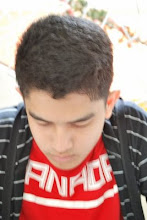This time, analysis in on segmentation of simulated cancer cells which are usually larger than normal cells.
This is done by having several regions of interests. Regions of interests are done by creating subimages of the image to be studied. Below shows the original image and the subimages. The subimages may overlap and has a dimension of 256 by 256 pixels. Each subimages are to be examined for the normal size of the cell. These values are used to have an estimate size for the normal cell.

The left is the representation of the normal cells and the right is the subimages.
The subimages are then binarized.
I assumed they are circles so, I used a circular structuring element. I tried the closing operation wherein it is just the erosion of the dilation of the image and the structuring element. And below is what happened.
 Binarized images when closed.
Binarized images when closed.
In this method, there are a lot of clusters and only a few normal sized cells remained. The cell area that will be obtained here will have a lot of standard deviation.
Next, I tried the opening operator wherein it is the dilation of the erosion of the image and its structure factor. And I got this image:
 There are few clusters and the normal sized cells are defined. This is better than closing in in finding out the area of the cells.
There are few clusters and the normal sized cells are defined. This is better than closing in in finding out the area of the cells.
BWLABEL function is very cool. It names the blobs and give the coordinates of each pixel in the blob. Using this function, the area per blob/ cell is easily obtained.
After obtaining the cell area, I constructed a structure factor in relation to the area of the normal cell I obtained. Take note that this obtained area has a mean and standard deviation. Thus, the area of the normal cell is a range.
Using another opening function with the binarized image of the collection of cells with cancer and normal cells as well as the structure factor constructed in realtion to the normal cell area, I have successfully segregated the cancer cells. Shown below:

Left are segregated cancer cells form the collection of cells in the right.
I'd say i will get 10/10 for this activity. bwlabel() is very powerful. I have some ideas to apply this function in different applications.
Thanks Maam Jing for this activity and several inputs. Also to my roomates in helping me code.
I assumed they are circles so, I used a circular structuring element. I tried the closing operation wherein it is just the erosion of the dilation of the image and the structuring element. And below is what happened.
 Binarized images when closed.
Binarized images when closed.In this method, there are a lot of clusters and only a few normal sized cells remained. The cell area that will be obtained here will have a lot of standard deviation.
Next, I tried the opening operator wherein it is the dilation of the erosion of the image and its structure factor. And I got this image:
 There are few clusters and the normal sized cells are defined. This is better than closing in in finding out the area of the cells.
There are few clusters and the normal sized cells are defined. This is better than closing in in finding out the area of the cells.BWLABEL function is very cool. It names the blobs and give the coordinates of each pixel in the blob. Using this function, the area per blob/ cell is easily obtained.
After obtaining the cell area, I constructed a structure factor in relation to the area of the normal cell I obtained. Take note that this obtained area has a mean and standard deviation. Thus, the area of the normal cell is a range.
Using another opening function with the binarized image of the collection of cells with cancer and normal cells as well as the structure factor constructed in realtion to the normal cell area, I have successfully segregated the cancer cells. Shown below:

Left are segregated cancer cells form the collection of cells in the right.
I'd say i will get 10/10 for this activity. bwlabel() is very powerful. I have some ideas to apply this function in different applications.
Thanks Maam Jing for this activity and several inputs. Also to my roomates in helping me code.


No comments:
Post a Comment